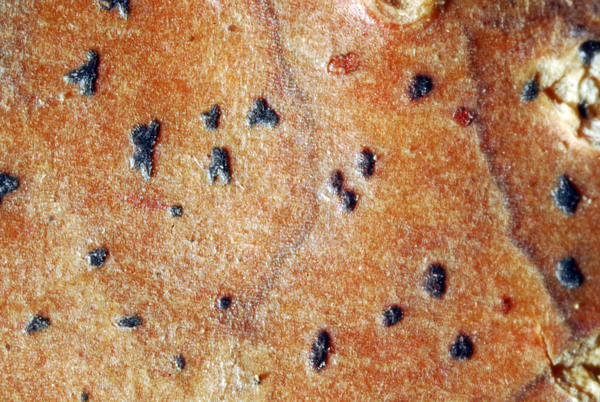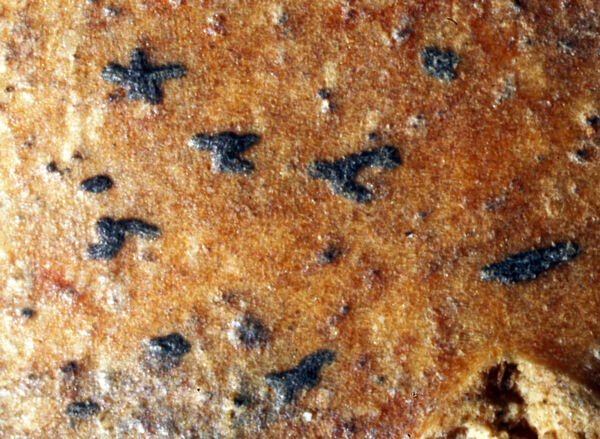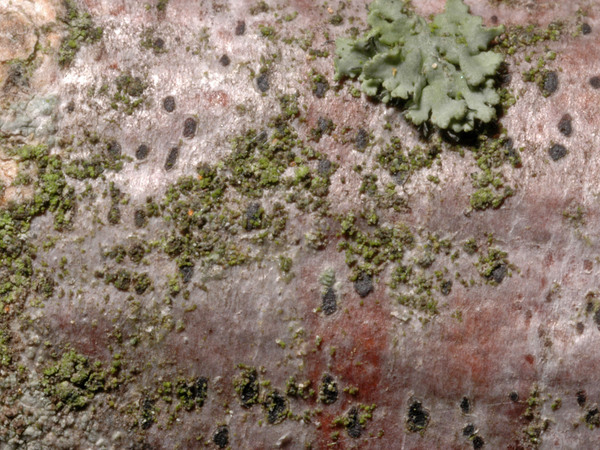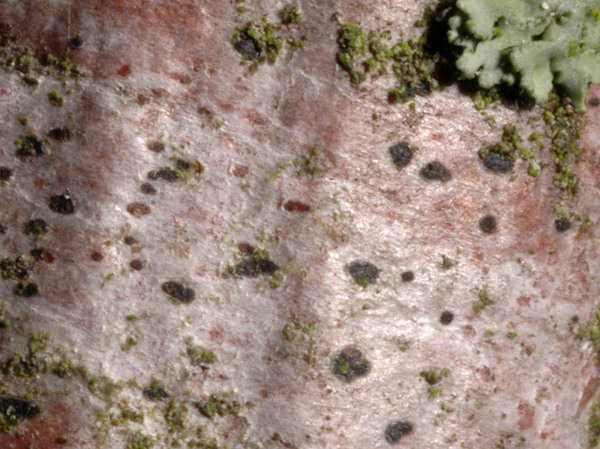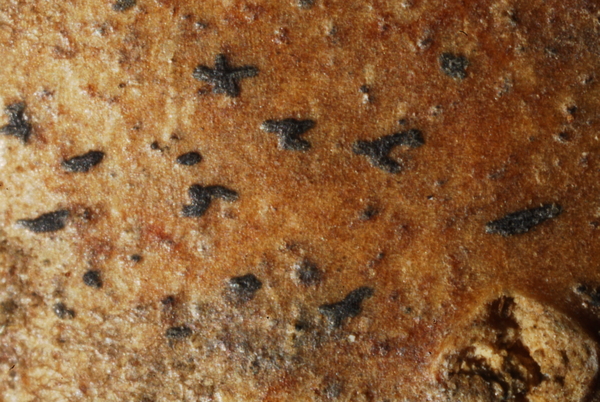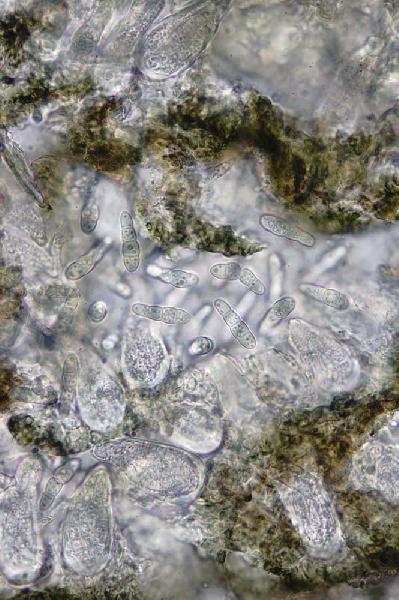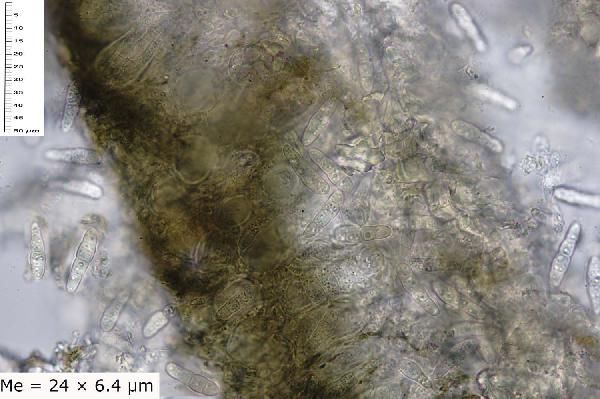Naevia punctiformis (Ach.) A. Massal.
Framm. Lichenogr.: 8, 1855.. Basionym: Arthonia punctiformis Ach. - K. Vetensk.-Akad. Nya Handl., 29: 130, 1808.
Synonyms: Arthonia armoricana f. saltelii B. de Lesd.; Arthonia astroidea f. fraxinea Bagl.; Arthonia atomaria A. Massal.; Arthonia atomaria var. depressa A. Massal.; Arthonia betulicola A. Massal. non sensu Anzi; Arthonia celtidis A. Massal.; Arthonia griseoalba Anzi?; Arthonia insinuata Stirt.; Arthonia populina A. Massal.; Arthonia punctiformis Ach.; Arthonia punctiformis f. oleandri (Rabenh.) Redinger; Arthonia punctiformis var. glaucescens Ach.; Arthonia punctiformis var. olivacea Ach.; Arthonia quadriseptata (Ohlert) Lettau; Naevia atomaria (A. Massal.) A. Massal.; Naevia celtidis (A. Massal.) A. Massal.; Naevia populina (A. Massal.) A. Massal.; Opegrapha atra var. abbreviata auct. hisp. p.max.p.
Distribution: N - VG, Frl, Ven (Sundin & Tehler 1998, Lazzarin 2000b, Nascimbene 2005c, Nascimbene & Marini 2007), TAA (Nascimbene & al. 2007b), Lomb (Zocchi & al. 1997, Furlanetto 2010), Piem (Isocrono & al. 2004, Giordani & Malaspina 2016), Emil (Valcuvia & Grieco 1995, Tretiach & al. 2008, Benesperi 2009), Lig (Giordani & Incerti 2008). C - Tosc (Ravera 2006b, Monaci & al. 1997, Tretiach & al. 2008, Loppi & Baragatti 2011), Marc (Nimis & Tretiach 1999, Frati & Brunialti 2006, Caporale & al. 2008), Umb (Ravera 1998, Ravera & al. 2006), Laz (Ravera & al. 1999, Nimis & Tretiach 2004, Stofer 2006, Munzi & al. 2007), Abr (Stofer 2006, Caporale & al. 2016), Mol (Caporale & al. 2008, Genovesi & Ravera 2014, Caporale & Ravera 2020), Sar (Sundin 1999, Zedda 2002, Rizzi & al. 2011, Cossu 2013, Neuwirth 2018, Di Nuzzo & al. 2022). S - Camp (Aprile & al. 2002, 2003b, Nimis & Tretiach 2004, Garofalo & al. 2010, Brunialti & al. 2013, Ravera & Brunialti 2013, Catalano & al. 2016), Pugl (Nimis & Tretiach 1999), Bas (Nimis & Tretiach 1999, Potenza 2006), Cal (Puntillo 1996, Puntillo & Puntillo 2004, Stofer 2006), Si (Grillo & Carfì 1997, Grillo 1998, Grillo & al. 2002, Brackel & Puntillo 2023).
Description: Thallus crustose, very thin, not lichenized, immersed in the bark, usually effuse, indistinct or slightly bleaching the bark, whitish to pale grey-brown, without a distinct prothallus. Apothecia arthonioid, 0.2-1.4 x 0.3-0.4 mm, 40-60 µm tall, black, epruinose, scattered all over the thallus, usually immersed, flat and non erumpent, variable in size and shape, from round to elongate, rarely branched or substellate, without a proper margin. Proper exciple inconspicuous, very thin, reddish brown, interrupted below the hypothecium; epithecium brown or olive-brown, 10-20 µm high, K+ green; hymenium colourless, (25-)30-50(-70) µm high, the hymenial gel I+ and K/I+ blue; paraphysoids 1-1.5 µm wide, the apical cells up to c. 3.5 µm wide, with dark brown caps; hypothecium colourless, poorly developed. Asci 8-spored, subglobose, semi-fissitunicate, with a large apical dome and a distinct ocular chamber, the apex with a K/I+ blue ring-structure, Arthonia-type. Ascospores 3(-5)-septate, slightly constricted at septa, hyaline, oblong-ovoid to oblong, the apical cell not enlarged, 13-20(-26) x 4-6(-7) µm, often with a thin epispore. Photobiont absent. Spot tests: K-, C-, KC-, P-, UV-. Chemistry: without lichen substances. Note: a temperate to boreal-montane, circumpolar early coloniser of smooth bark, especially of twigs, rare in dry areas; doubtfully lichenised and probably heterogeneous (Moen 2019).
Growth form: Crustose
Substrata: bark
Photobiont: Trentepohlia
Reproductive strategy: mainly sexual
Pioneer species
Commonnes-rarity: (info)
Alpine belt: absent
Subalpine belt: very rare
Oromediterranean belt: extremely rare
Montane belt: rather common
Submediterranean belt: rather common
Padanian area: extremely rare
Humid submediterranean belt: rather common
Humid mediterranean belt: rather rare
Dry mediterranean belt: extremely rare

Predictive model
Herbarium samples
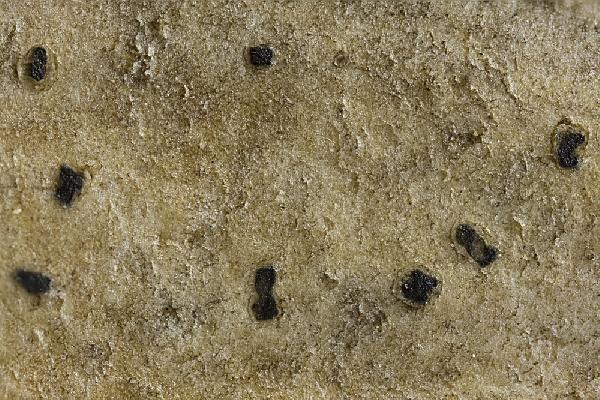
Ulrich Kirschbaum CC BY-SA 4.0 - Source: https://www.thm.de/lse/ulrich-kirschbaum/flechtenbilder
On smooth bark of deciduous trees (Acer pseudoplatanus).Germany; Hesse: Rhön mountains.(Collected/identified by Teuber).
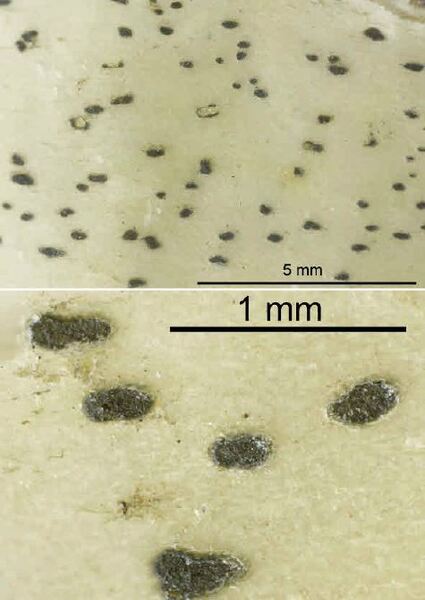

Felix Schumm – CC BY-SA 4.0
[16680], Germany, Niedersachsen, Kreis Stade, Jork, Osterladekop 57, mittlerer Kronenbereich einer Betula pendula im Hausgarten. Leg. Hans-Georg Wagner, 19.Sept. 2009.
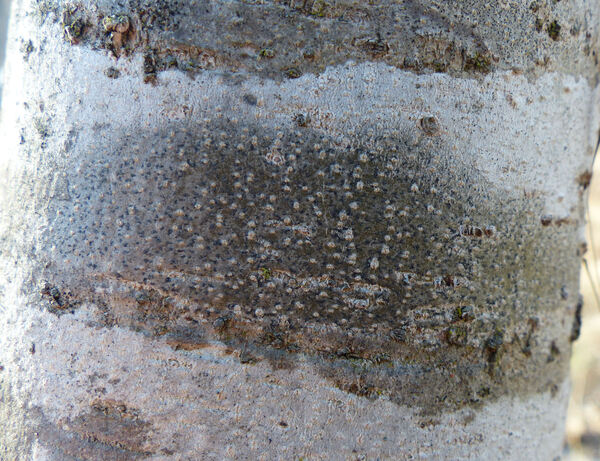

Andrea Moro; Owner: Department of Life Sciences, University of Trieste
Italy, Friuli Venezia Giulia, Trieste, Trieste Karst near Borgo Grotta Gigante, on Fraxinus ornus
16/02/2017
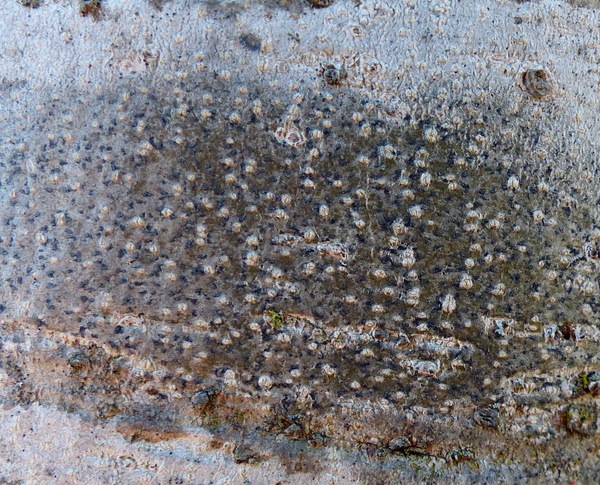

Andrea Moro; Owner: Department of Life Sciences, University of Trieste
Italy, Friuli Venezia Giulia, Trieste, Trieste Karst near Borgo Grotta Gigante
16/02/2017
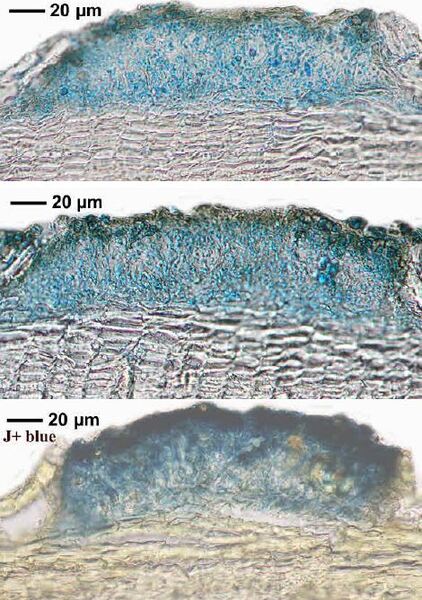

Felix Schumm – CC BY-SA 4.0
[16680], Germany, Niedersachsen, Kreis Stade, Jork, Osterladekop 57, mittlerer Kronenbereich einer Betula pendula im Hausgarten. Leg. Hans-Georg Wagner, 19.Sept. 2009.
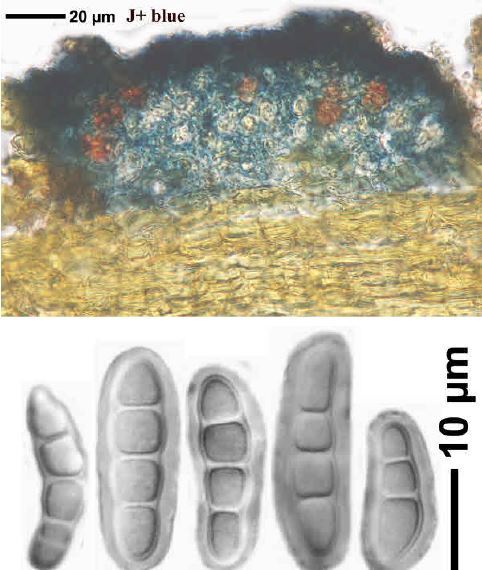

Felix Schumm – CC BY-SA 4.0
[16680], Germany, Niedersachsen, Kreis Stade, Jork, Osterladekop 57, mittlerer Kronenbereich einer Betula pendula im Hausgarten. Leg. Hans-Georg Wagner, 19.Sept. 2009.
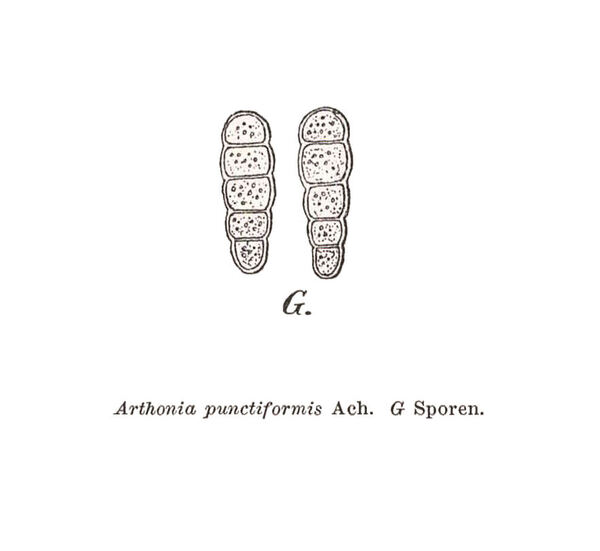
Zahlbruckner A. 1926. Lichenes (Flechten). In: Engler A. (ed.): Die natürlichen Pflanzenfamilien. 2nd ed., vol 8, W. Engelmann, Leipzig, 270 pp.
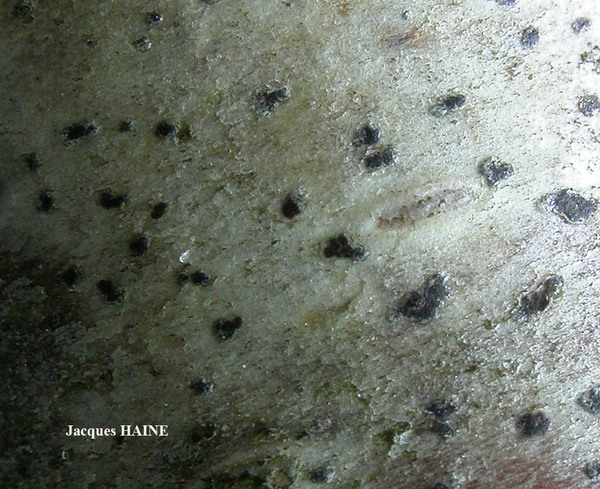
Jacques Haine - Source: http://www.lichensmaritimes.org/index.php?task=fiche&lichen=819&lang=en
France, Ardennes
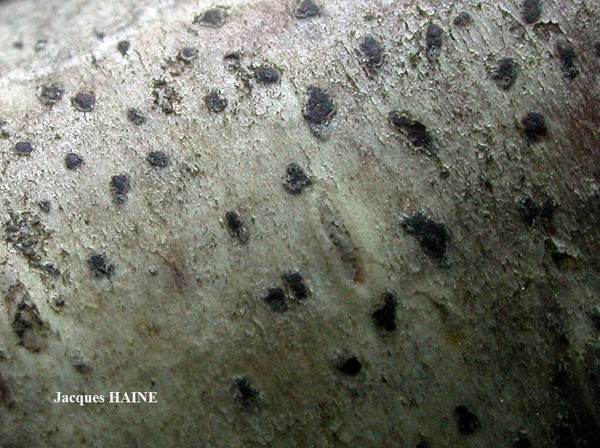
Jacques Haine - Source: http://www.lichensmaritimes.org/index.php?task=fiche&lichen=819&lang=en
France, Ardennes
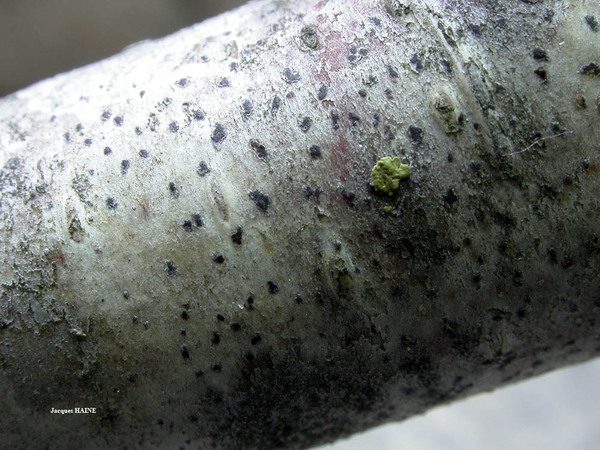
Jacques Haine - Source: http://www.lichensmaritimes.org/index.php?task=fiche&lichen=819&lang=en
France, Ardennes
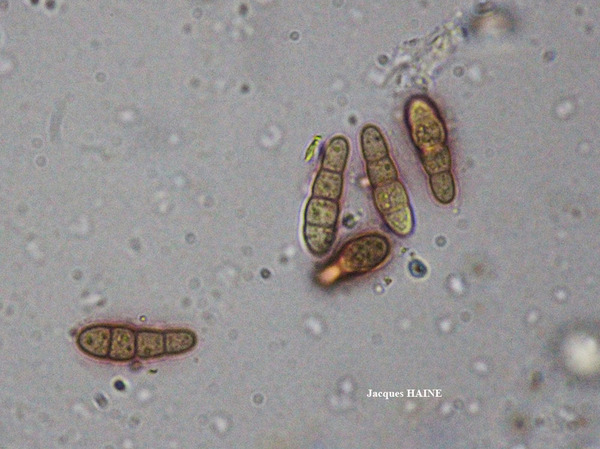
Jacques Haine - Source: http://www.lichensmaritimes.org/index.php?task=fiche&lichen=819&lang=en
France
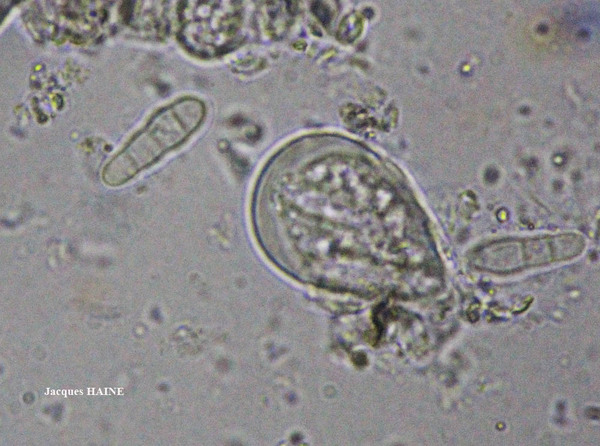
Jacques Haine - Source: http://www.lichensmaritimes.org/index.php?task=fiche&lichen=819&lang=en
France
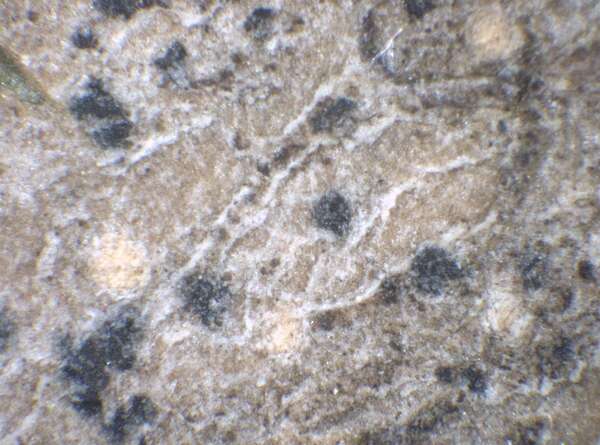

P.L. Nimis; Owner: Department of Life Sciences, University of Trieste
Herbarium: TSB (32322)
2003/03/11
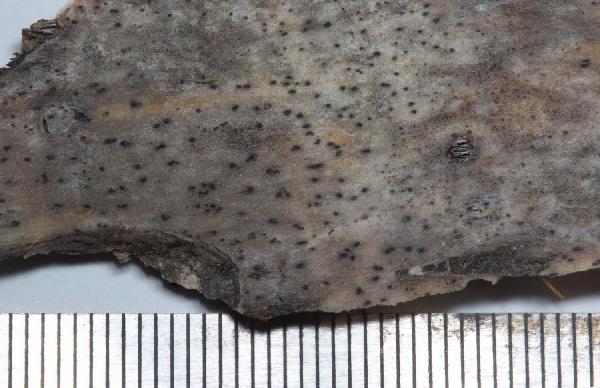
Marta Gonzalez Garcia - Centro de Estudios Micologicos Asturianos
Spain, Boca de Huegano (León), 11-III-2023, en corteza de Sorbus aucuparia.
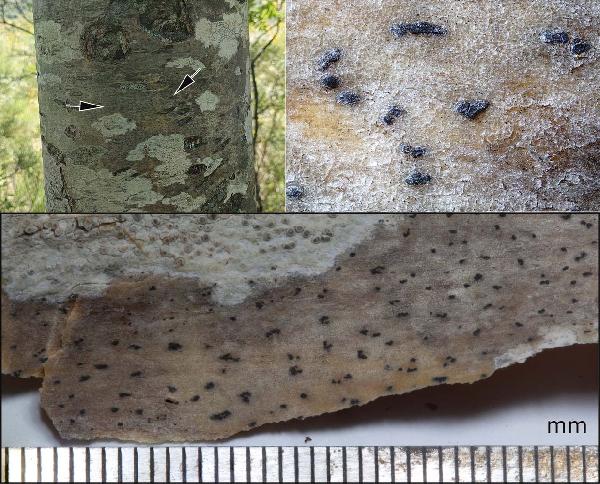
Marta Gonzalez Garcia - Centro de Estudios Micologicos Asturianos
Spain, Boca de Huegano (León), 11-III-2023, en corteza de Sorbus aucuparia.
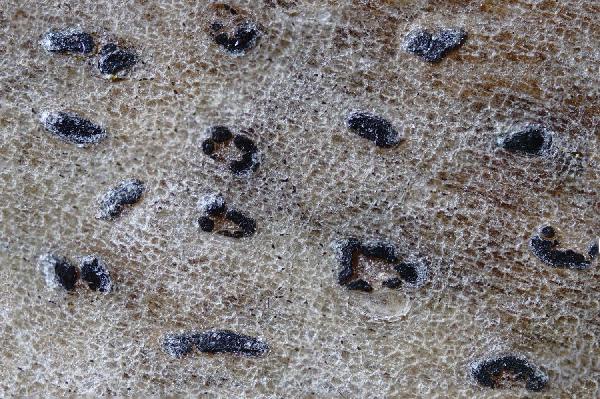
Marta Gonzalez Garcia - Centro de Estudios Micologicos Asturianos
Spain, Boca de Huegano (León), 11-III-2023, en corteza de Sorbus aucuparia.
Growth form: Crustose
Substrata: bark
Photobiont: Trentepohlia
Reproductive strategy: mainly sexual
Pioneer species
Commonnes-rarity: (info)
Alpine belt: absent
Subalpine belt: very rare
Oromediterranean belt: extremely rare
Montane belt: rather common
Submediterranean belt: rather common
Padanian area: extremely rare
Humid submediterranean belt: rather common
Humid mediterranean belt: rather rare
Dry mediterranean belt: extremely rare

Predictive model
| Herbarium samples |

Ulrich Kirschbaum CC BY-SA 4.0 - Source: https://www.thm.de/lse/ulrich-kirschbaum/flechtenbilder
On smooth bark of deciduous trees (Acer pseudoplatanus).Germany; Hesse: Rhön mountains.(Collected/identified by Teuber).


Felix Schumm – CC BY-SA 4.0
[16680], Germany, Niedersachsen, Kreis Stade, Jork, Osterladekop 57, mittlerer Kronenbereich einer Betula pendula im Hausgarten. Leg. Hans-Georg Wagner, 19.Sept. 2009.


Andrea Moro; Owner: Department of Life Sciences, University of Trieste
Italy, Friuli Venezia Giulia, Trieste, Trieste Karst near Borgo Grotta Gigante, on Fraxinus ornus
16/02/2017


Andrea Moro; Owner: Department of Life Sciences, University of Trieste
Italy, Friuli Venezia Giulia, Trieste, Trieste Karst near Borgo Grotta Gigante
16/02/2017


Felix Schumm – CC BY-SA 4.0
[16680], Germany, Niedersachsen, Kreis Stade, Jork, Osterladekop 57, mittlerer Kronenbereich einer Betula pendula im Hausgarten. Leg. Hans-Georg Wagner, 19.Sept. 2009.


Felix Schumm – CC BY-SA 4.0
[16680], Germany, Niedersachsen, Kreis Stade, Jork, Osterladekop 57, mittlerer Kronenbereich einer Betula pendula im Hausgarten. Leg. Hans-Georg Wagner, 19.Sept. 2009.

Zahlbruckner A. 1926. Lichenes (Flechten). In: Engler A. (ed.): Die natürlichen Pflanzenfamilien. 2nd ed., vol 8, W. Engelmann, Leipzig, 270 pp.

Jacques Haine - Source: http://www.lichensmaritimes.org/index.php?task=fiche&lichen=819&lang=en
France, Ardennes

Jacques Haine - Source: http://www.lichensmaritimes.org/index.php?task=fiche&lichen=819&lang=en
France, Ardennes

Jacques Haine - Source: http://www.lichensmaritimes.org/index.php?task=fiche&lichen=819&lang=en
France, Ardennes

Jacques Haine - Source: http://www.lichensmaritimes.org/index.php?task=fiche&lichen=819&lang=en
France

Jacques Haine - Source: http://www.lichensmaritimes.org/index.php?task=fiche&lichen=819&lang=en
France


P.L. Nimis; Owner: Department of Life Sciences, University of Trieste
Herbarium: TSB (32322)
2003/03/11

Marta Gonzalez Garcia - Centro de Estudios Micologicos Asturianos
Spain, Boca de Huegano (León), 11-III-2023, en corteza de Sorbus aucuparia.

Marta Gonzalez Garcia - Centro de Estudios Micologicos Asturianos
Spain, Boca de Huegano (León), 11-III-2023, en corteza de Sorbus aucuparia.

 Index Fungorum
Index Fungorum
 GBIF
GBIF
